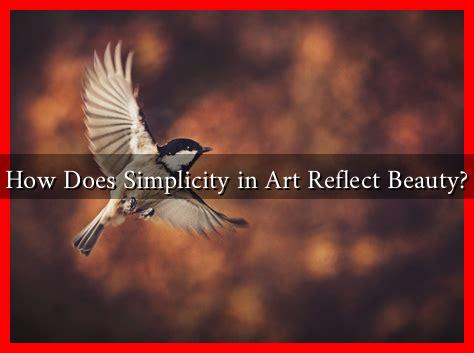-
Table of Contents
How Does Simplicity in Art Reflect Beauty?
Art has long been a medium through which humans express their thoughts, emotions, and perceptions of beauty. While complexity often garners attention, simplicity in art has a unique ability to resonate deeply with viewers. This article explores how simplicity in art reflects beauty, examining its historical context, psychological impact, and contemporary relevance.
The Historical Context of Simplicity in Art
Simplicity in art is not a modern phenomenon; it has roots in various artistic movements throughout history. From the minimalist art movement of the 20th century to the simplicity found in ancient Japanese aesthetics, the appreciation for minimalism has been a recurring theme.
- Minimalism: Emerging in the late 1950s, minimalism sought to strip art down to its essential elements. Artists like Donald Judd and Agnes Martin emphasized form and color over complexity, allowing viewers to engage with the artwork on a more profound level.
- Japanese Aesthetics: Concepts such as “wabi-sabi,” which celebrates imperfection and transience, highlight the beauty found in simplicity. Traditional Japanese art often employs minimalistic designs that evoke a sense of tranquility and harmony.
The Psychological Impact of Simplicity
Research in psychology suggests that simplicity can enhance our emotional responses to art. The human brain is wired to seek patterns and make sense of the world around us. When confronted with overly complex images, our cognitive load increases, making it difficult to appreciate the artwork fully.
- Ease of Processing: Studies indicate that simpler designs are easier for the brain to process, leading to a more enjoyable viewing experience. This phenomenon is known as the “mere exposure effect,” where repeated exposure to simple forms can increase our preference for them.
- Emotional Resonance: Simplicity often evokes strong emotional responses. For instance, the stark beauty of a single flower in a minimalist painting can elicit feelings of peace and introspection, allowing viewers to connect with their emotions more readily.
Contemporary Examples of Simplicity in Art
In today’s art world, simplicity continues to thrive across various mediums. Artists are increasingly embracing minimalism to convey powerful messages without overwhelming their audience.
- Yayoi Kusama: Known for her polka dots and infinity rooms, Kusama’s work often employs simple patterns that create immersive experiences. Her art invites viewers to reflect on their existence within the universe.
- Ellsworth Kelly: A prominent figure in color field painting, Kelly’s use of bold colors and simple shapes exemplifies how minimalism can create striking visual impact. His works encourage viewers to appreciate the beauty of color and form without distraction.
The Role of Simplicity in Design
Beyond traditional art, simplicity plays a crucial role in design, influencing everything from architecture to graphic design. The principle of “less is more” is often applied to create functional and aesthetically pleasing designs.
- Architecture: Modern architects like Tadao Ando and Zaha Hadid have embraced simplicity in their designs, focusing on clean lines and open spaces that foster a sense of calm and beauty.
- Graphic Design: In the digital age, minimalist design has become a trend, with companies like Apple and Google utilizing simple interfaces to enhance user experience. Research shows that users prefer clean, straightforward designs that facilitate navigation.
Conclusion: The Beauty of Simplicity
In conclusion, simplicity in art reflects beauty through its historical significance, psychological impact, and contemporary relevance. By stripping away the unnecessary, artists can create works that resonate deeply with viewers, allowing for emotional connections and introspection. As we continue to navigate a world filled with complexity, the allure of simplicity remains a powerful reminder of the beauty that can be found in the essential.
For further exploration of the relationship between simplicity and beauty in art, consider visiting The Art Story, which provides insights into various art movements and their philosophies.

